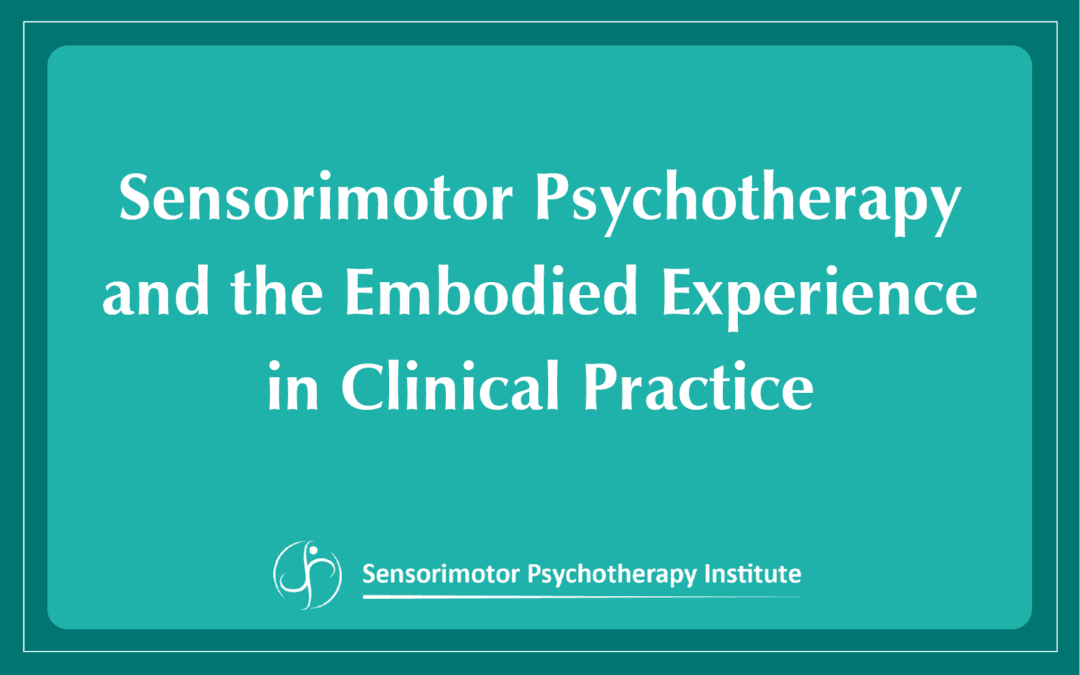In the realm of psychotherapy, the focus has traditionally been on the mind—the language, emotions, insights and cognitive processes of the client.
The body, however, has been relegated to the background, despite its profound role in shaping our experience .
This article delves into the significance of integrating the body into treatment for trauma and PTSD with a particular focus on Sensorimotor Psychotherapy – a holistic approach that recognizes the body as a vital target of intervention and avenue for healing in clinical practice.
The Neglected Body
Psychotherapists, well-versed in psychodynamic, psychoanalytic, or cognitive therapeutic models, excel at deciphering the language and emotions of their clients.
They navigate through childhood narratives, psychic conflicts, and psychological defense mechanisms, monitor physical symptoms using psychopharmacological interventions if indicated. And they note the physical presentation of their clients—the mannerisms, changes in weight, the agitated movements of an anxious client, or the slumped posture of a depressed client.
However, despite the observation of bodily cues, a comprehensive engagement with the client’s embodied experience often remains on the periphery of traditional therapeutic strategies. Since unresolved trauma gives rise to all sorts of disturbing body experiences, which contribute to trauma-related beliefs and a relentless cascade of emotions, it makes sense to directly target the body itself in the treatment of trauma.
Sensorimotor Psychotherapy bridges this gap by placing the body at the forefront of therapeutic awareness and intervention to great advantage in the treatment of trauma. Drawing from both traditional talk therapy and body psychotherapy traditions, this approach asserts that incorporating body-oriented interventions enhances the depth and effectiveness of clinical work to resolve attachment failures, relational trauma and PTSD.
We propose that traditional therapists can elevate the depth and efficacy of their clinical work by recognizing and directly addressing the embodied experiences of their clients.
Understanding Trauma’s Impact
Trauma, with its profound effects on the body and nervous system, often manifests in somatic symptoms: physical pain, muscle tension, physiological arousal, numbness, agitation and more.
Triggered by traumatic reminders, difficulty modulating arousal can disrupt relationships and cause undue distress. Hyper and hypo-arousal that fuel trauma related emotions, such as rage, terror, panic or numbing of emotions, are often at the root of recurring post traumatic symptoms for which clients seek treatment. In addition, physical symptoms like muscle tension, slumped posture or pain contribute to trauma-related beliefs, such as “I’ll never be safe” or “It’s all my fault.”
Sensorimotor Psychotherapy recognizes the link between the body, emotions and beliefs and seeks to address the somatic aspects of trauma for a more comprehensive healing approach that in turn impacts distressing emotions and cognitive distortions.
The Practice of Sensorimotor Psychotherapy
Traditional therapeutic models operate mostly with a “top-down” approach, emphasizing narrative expression and cognitive restructuring to effect change. The working premise is that a significant change in the client’s cognitions and emotions will effect change in the physical or embodied experience of the client’s sense of self.
The prime target for therapeutic intervention is therefore the client’s words; the client’s verbal narrative is the entry point into the therapeutic process. The client’s verbal expression, beliefs and emotions are engaged, explored, and reworked through the therapeutic relationship.
To these already useful cognitive and dynamic practices and techniques, the addition of “bottom-up” interventions can effectively address the repetitive, unbidden, physical sensations, movement patterns, muscular tension and somatosensory intrusions and other symptoms of PTSD.
Sensorimotor Psychotherapy introduces a crucial “bottom-up” approach, focusing on the physical legacy of trauma. By including body-centered interventions as a primary entry point in trauma therapy, therapists can address the repetitive, physical and physiological residue of client’s trauma, which in turn promotes a positive change in beliefs and trauma-related emotions.
Sensorimotor Psychotherapy combines cognitive and dynamic therapy principles and interventions with somatic interventions that directly target the body. The therapy actively involves physical action and sensation, and views the body as a valuable avenue of exploration on par with addressing emotions and cognition, to foster a unified mind-body approach to trauma treatment.
Clients are guided to become aware of their bodies, track bodily sensations, and implement actions that foster feeling empowered and competent. They learn somatic resources to modulate arousal, and cultivate a sense of agency over their symptoms. They also discover the effect of limiting beliefs, such as “It’s all my fault” on the body, and learn to work synergistically with body and mind to restructure these beliefs.
In Sensorimotor Psychotherapy treatment, clients become increasingly curious about how their bodies participate in the quality of their lives and how to befriend the body to support their wellbeing.
Combining Top-Down and Bottom-Up Approaches
As we embrace a more holistic perspective, the integration of body-centered approaches becomes not just an option but a necessity for comprehensive and transformative healing.
Sensorimotor Psychotherapy stands out as an innovative approach that recognizes the integral role of the body in the healing process. By acknowledging the profound impact of trauma on the embodied experience, therapists can create a more inclusive and effective therapeutic space and take advantage of the interventions that can shift the somatic effects of trauma.
In clinical practice, Sensorimotor Psychotherapy helps traumatized clients regulate their arousal, and learn adaptive actions so that they feel centered, grounded, and oriented toward the here and now instead of the past. By combining top-down with bottom-up interventions, the best of both worlds can be integrated to help chronically traumatized clients resolve their traumatic history and go on to live meaningful, rich lives.
Dr. Pat Ogden is the Founder of the Sensorimotor Psychotherapy Institute


Recent Comments